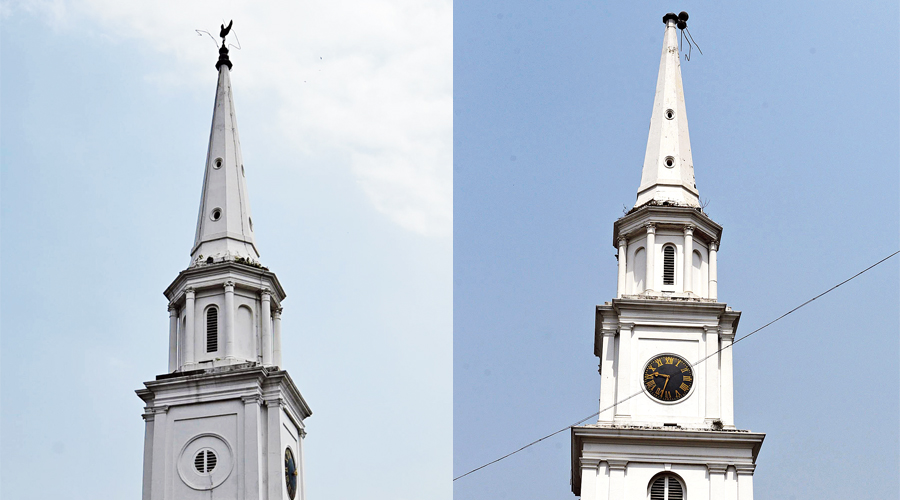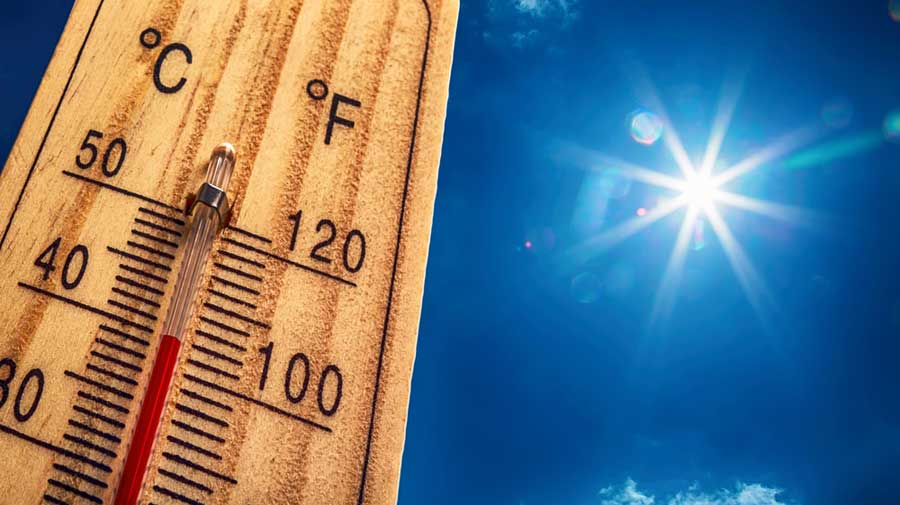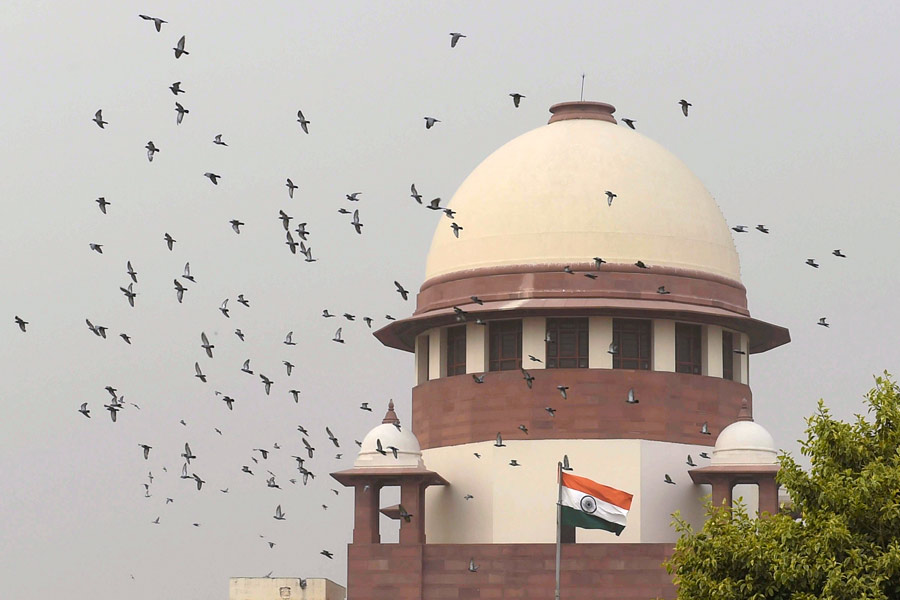The black weather cock atop the white steeple of St Andrew’s Kirk (Scottish Church) that stands right in the middle of Dalhousie Square will be back again crowing over the nearby St John’s Church. It was blown to bits during Cyclone Amphan.
Thanks to the efforts of Intach, Calcutta, the black cock — a conspicuous item in the Dalhousie skyline missing from the spire since May last year — will once again tell us which way the wind is blowing over the nearby Writers Buildings.
Restorers from Intach are working to put back the brass weather vane which was mounted on the spire when the church was built in 1818 by M/s Burn, Currie & Co.
“We found the original drawing of the weather cock from London with measurements,” said G.M. Kapur of Intach, Calcutta, which is paying for the restoration of the bird, estimated at around Rs 10 lakh. “The expenses are being paid from Intach’s fund for repairing heritage structures damaged by natural disasters.”
The weather cock had needed no repairs probably since it was mounted when the church was built.
“So long I have been with St Andrews Church I don’t recall any instance when the vane was repaired,” said Michael Pook, session’s clerk of the church, who is currently in London.
“It was a very old thing made of brass and copper sheets brazed together. It was mounted on a steel frame with a shaft at the bottom and a bronze bearing on which it turned when the wind blew. The whole thing was mounted on the spire,” said Pook.
He couldn’t remember if the vane was operational before it fell. “Its a pretty aggressive environment there with pollution and other things. Perhaps it had stopped and caught the full force of the wind and was destroyed,” said Pook.
“We could retrieve only bits and pieces of it,” said Reverend Swarup Bar, the priest-in-charge at St Andrew’s.
The pieces of the weather cock are being cleaned and repaired by Subrata Sen, senior conservator, Intach Delhi, who is working from a makeshift workshop on the church premises.
“The head has totally crashed, the body parts and the tail are there. Almost all the parts of the weather cock have been retrieved,” said Sen, who pieced them together. “I am using the retrieved pieces to reconstruct the bird.” After reconstruction, installing it atop the spire will be another challenge.
St Andrew’s Church was the first Scottish Church of Calcutta built in 1818. At the time Calcutta was the seat of power of the East India Company. In its early days, the company had no ecclesiastical establishment of its own.
Apparently, every ship that anchored here had its own chaplain and some ministers from the Episcopal Church of England. As the number of Presbyterians grew, so did the demand for Presbyterian ministers.
Though the company was under no obligation to appoint chaplains, they were a god fearing people. And so a chaplain was appointed in 1607, according to the earliest records and the number of churches gradually grew with the growth of the establishment.
The Anglo-Indian Presbytery was created by the Charter of 1813 along with the Anglo India Episcopate.
James Bryce was appointed as a chaplain of the Bengal Ecclesiastical Establishment. “The first Presbyter and the first Bishop (Middleton) came out together to India. On the ship, there were debates and discussions. They didn’t agree and weren’t the best of friends. The Bishop had said only Aglicans can have a spire on their church. Bryce not only disagreed but promised to build a steeple taller than that of St John’s Church and put a weather cock on top of it to crow over St John’s,” said Pook.
When asked if this was indeed true, Pook said: “The story has been told a number of times and no one has disputed it.”












